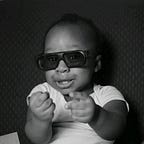Handicrafts in the Homeschool
Giorgio Vasari wrote about Leonardo Da Vinci:
‘He had a divine and wonderful mind. Since he was excellent at geometry, he was able to sculpt and prepare many architectural plans. He designed mills and other engines powered by water. Painting was his life, and he studied drawing by observing real objects from life.’
and Robert A. Heinlein wrote..
“A human being should be able to change a diaper, plan an invasion, butcher a hog, conn a ship, design a building, write a sonnet, balance accounts, build a wall, set a bone, comfort the dying, take orders, give orders, cooperate, act alone, solve equations, analyze a new problem, pitch manure, program a computer, cook a tasty meal, fight efficiently, die gallantly. Specialization is for insects.”
At the very beginning of my homeschooling journey, I knew I wanted physical work to be an element of our education. At the time, my focus was the development of fine motor skills.
It’s no secret that Charlotte Mason emphasised the importance of handicrafts in the P.N.E.U . In one of her magazine articles , she said,
Part of the brain is occupied with the movement of the limbs. Physiology tells us that the active period of development of this section closes at the age of fifteen. The conclusion is inevitable, that unless our young children are provided with some means of training the physical movements, some part of the brain must be permanently enfeebled. We must therefore provide a training for it, especially for those parts connected with movements of the hand
Of course, the age mentioned is up for debate. We now know about the concept of neuroplasticity. However, we cannot deny that it is certainly easier to pick up on certain skills when one is younger. Asides the fact that the brain actively produces neurons and connections to tackle any new skill, a child that produces with his hands develops confidence that permeates other aspects of his life.
I’m asking myself these questions:
- What should my children learn?
- Why should they learn these things?
- How should they learn these things?
- What life skills are necessary?
- How am I making sure that they learn all the life skills and handicrafts they need?
I have decided to come up with a list of handicrafts and life skills that my kids should learn before they turn eighteen. This will mean I have to learn a lot too. Homeschooling is not merely teaching your child, it is being a fellow learner on this journey of life. The more we learn alongside our children, the more our children will realise that learning has no age-limit. Someone will wonder, “ Why don’t we just focus on our children’s strengths”. As Heinlein said,” Specialistion is for insects”.
